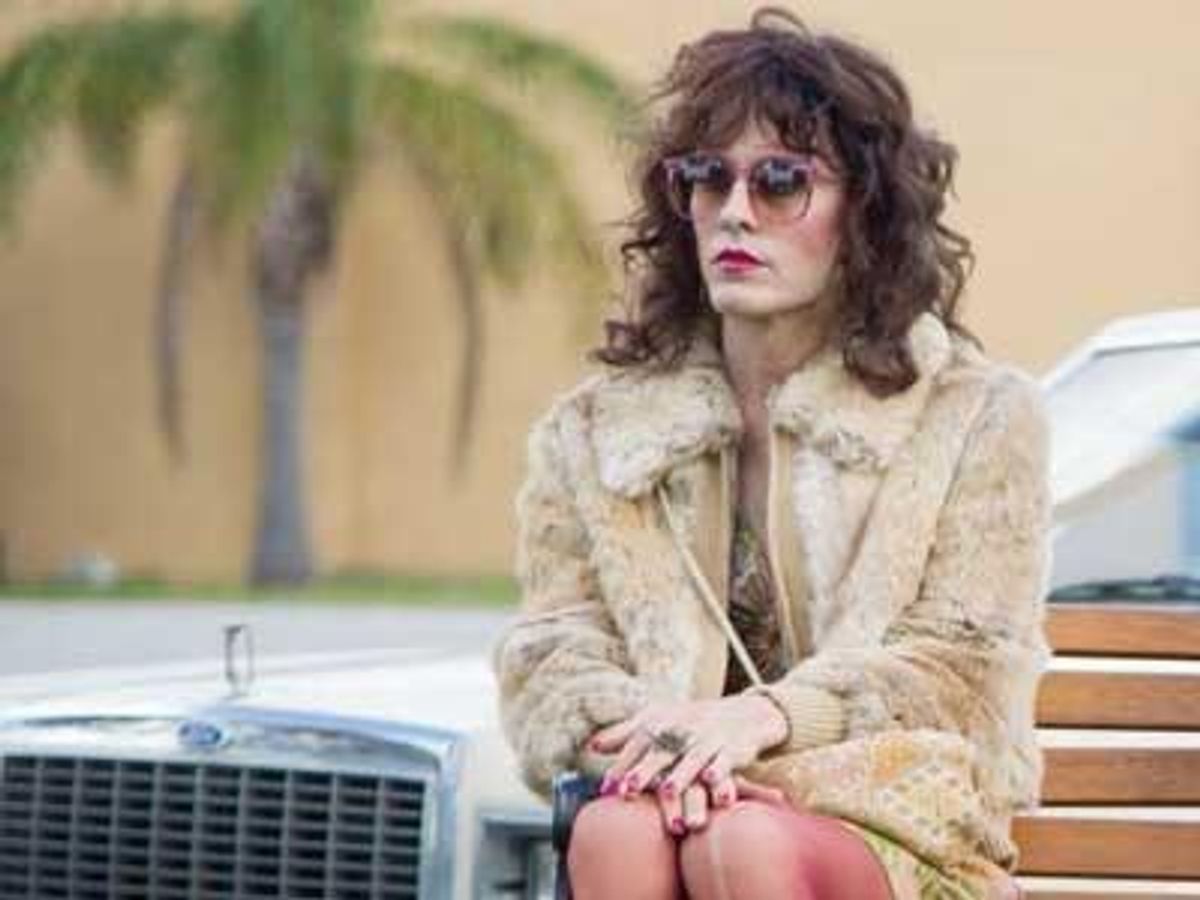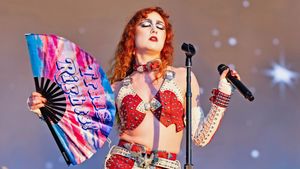Last week, Calpernia Addams wrote an op-ed for this publication regarding Jared Leto's portrayal of transgender woman Rayon in Dallas Buyers Club. Addams, a trans woman who coached Leto on his portrayal in the Oscar-winning film, suggested that cisgender (nontrans) actors should be able to play trans roles, so long as they're the most qualified person for the job.
In doing this, Addams, like so many others, understates the frustration many trans people have with Leto's portrayal; It's not simply that he was a cis actor playing a trans role -- but that he was a cis actor playing the same trans role the world has seen a hundred times before.
Addams, herself, represents a very specific type of trans woman. She's a showgirl and she often refers to herself as a transsexual. There's nothing wrong with individuals like Addams, just as there isn't anything wrong with "the Rayons of the world." What is wrong is that transgender individuals -- specifically transgender women -- are almost always portrayed as this particular type of trans woman.
But I ask you to really think: when was the last time anyone saw a transgender woman portrayed on-screen as a T-shirt and jeans-wearing, makeup-free accountant? Or how about as an advertising executive, or maybe a doctor?
The overwhelming majority of portrayals of trans women paint us as one of three tropes: a sex worker, a deceptive "trap" for heterosexual men, or as a dead body on Law & Order or CSI. Occasionally, just for laughs, a film or TV show will take the "ridiculous trans woman" route, and put a burly man in a dress so others can ridicule the character.
Because the media portrays trans women in this very specific way, the public comes to accept that this must be what trans individuals are like. After all, if we came in any other variation, don't you think one of the dozens of shows and movies that portray us would have mixed us in on occasion?
These monolithic portrayals undoubtedly contribute to the sense of surprise people share when they first meet me, clad in jeans, a sweater, and with muted makeup.
"But you look so normal," a friend of a friend once told me as a backhanded compliment. "You don't look trans! I would have never known."
That's exactly the point. When someone says, "You don't look trans," they're trying to squeeze an incredibly diverse range of identities into a uniform understanding of what trans people look like. In reality, some trans women are straight, some are gay; some vote Democratic, while others are lifelong Republicans; some are the world's Rayons, but most of us are not.
The single-image narrative put out by the media is one of the primary reasons I didn't feel certain about who I was until I was in my mid-20s. As a teenager, I'd see trans women in fictional and factual TV portrayals, and I'd think, I'm nothing like that. I'm a kid who sits in their bedroom, listening to metal records and learning Van Halen riffs on my guitar. I like to go to sporting events -- cheering on the Cubs, Bulks, Bears, and Blackhawks. I'm nothing like those people.
When I first found the term "transgender" in my mid-teens, it didn't quite fit. All the trans females I saw on TV were boy-crazy, makeup-obsessed, over-the-top caricatures. That media stereotype was damaging to my health, leading me to believe I wasn't trans -- that I was just a broken person who probably shouldn't exist on this earth. I often wonder how many others felt like that, and continue to feel that way.
The media's inability and unwillingness to battle these stereotypes comes with a body count. Holding up Rayon as the sole ambassador of transness promotes a single, drawn-out, over-the-top narrative, yet again. It also lets other Hollywood decision-makers -- like writers, directors, and producers, up to studio executives -- perpetuate these tired tropes while they give themselves pats on the back for being so "inclusive."
No one is debating the existence of people like Rayon. There are Rayons of the world, certainly. How about giving the rest of our stories a voice?
In a December interview with the Canadian Broadcasting Corp., Dallas Buyers Club director Jean-Marc Vallee was asked if he had ever considered hiring a transgender actress for the role of Rayon. "Never," Vallee said, following that up by asking the interviewer if there were any trans actors, and concluding his thoughts on the matter by saying, "I'm not aiming for the real thing. I'm aiming for an experienced actor who wants to portray the thing." To be clear, the "thing" referenced by Vallee is a transgender woman.
Throughout that same interview, Vallee refers to the character of Rayon as either "a guy," or "a transgender guy." This shouldn't be surprising, as the script -- even the parts that weren't pieces of dialogue -- refer to Rayon as "he," "him," and at one point, simply reads, "that's not a woman." That's how the role was written, with Rayon as a flamboyant, full-time crossdresser, but not a transgender woman. It wasn't until Leto later decided to play the character as a transgender woman that there was any indication that the character wasn't just a man who liked to wear women's clothing.
If we are to believe a Rayon is transgender, then it's shame Vallee didn't even consider a trans person for the role and didn't bother to brush up on the correct terminology to refer to a trans woman before heading out to do press for the film.
So, what can filmmakers and television producers do moving forward to better represent trans individuals? For starters, invite trans actors to audition for trans roles. I know the automatic argument, which Leto himself offered when a pair of trans activists critiqued the role for its trans-misogyny at a California awards ceremony: If we give trans roles to trans actors, are we then saying straight actors shouldn't be allowed to play gay parts?
That question is disingenuous. Of course that's not what I'm arguing for. If we lived in a world where gay actors were virtually disqualified from portraying straight characters, of course I'd support them getting first shot at gay roles. Luckily, we live in a world where gay actors play straight characters (Neil Patrick Harris on How I Met Your Mother) and straight actors can play gay roles (Eric Stonestreet on Modern Family).
By contrast, can you name a single instance where a transgender actor has been placed in a cisgender role?
No.
For trans actors, these are the only available parts, and given that this is actually a representation of their own lives, they would probably excel in the role, as long as their acting skills are at least par. So, until we live in a world where trans actors are offered cis roles, the comparison to straight actors playing gay roles falls flat.
And dear casting director, if you feel compelled to cast a cisgender actor in a trans role, please at least have the courtesy to cast someone of the correct gender. If you're casting for the role of a transgender woman, cast a cisgender woman.
The insistence on having cis men play trans women reinforces "man in a dress" stereotypes, and feels as though Hollywood is saying, "trans women are more man than they are woman." The only possible exception to this recommendation would be in the case of a character who is just coming out, or who isn't socially and medically transitioning. This is why Jeffrey Tambor in Transparent may very well work, and still manage to provide a respectful portrayal.
I implore filmmakers who are not versed in the transgender field and are preparing to produce a film with trans subject matter, to work with trans and LGBT advocacy groups. GLAAD, the National Center for Transgender Equality, the Transgender Law Center, and others are excellent organizations capable of helping people get in touch with individuals who don't simply embody the roles that have been rehashed time and again.
Finally, stop depicting trans people as image-obsessed, fake people. There's no need to repeatedly show someone putting on makeup in front of a mirror. There's no need to include uncomfortably cliched phrases like "trapped in the wrong body," or to suggest that "transition is a journey" that "ends with surgery, which will finally make me a woman!" No, no, no.
That reductive line of thinking is the essence of biological essentialism, and it's why people like Piers Morgan see no problem referring to surgery as the point in time where someone "became" their target gender. These cliches are so rampant that someone has actually developed a "trans documentary drinking game" where you take a shot each time a transition trope gets trotted out.
Ultimately, if you really want to improve trans representation in media, simply listen to trans voices and concerns. Over the course of Dallas Buyers Club's run, thousands of trans people have spoken out with various concerns. These people were often labeled as "hecklers" and "angry trans activists." Truth is, we're neither. We're people who want to be fairly portrayed in the media. We've been silenced and shouted down. We've been told our voices don't matter. If some of us sound angry, know that it's the result of years of being ignored.
PARKER MARIE MOLLOY is the founder ofPark That Carand works as a freelance writer. She has contributed writing toRolling Stone, Salon, The Huffington Post,andTalking Points Memoas well asThe Advocate.Follow her on Twitter @ParkerMolloy.
CORRECTION: An earlier version of this op-ed described Calpernia Addams as a "drag queen," and was revised to say "showgirl." The Advocate regrets the error.

















































































